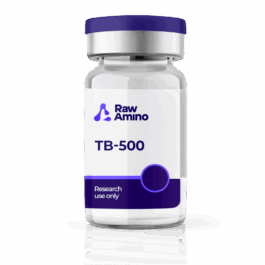Introduction
Across experimental systems, aging emerges from a web of interdependent processes rather than a single linear cascade. Among these, three antagonistic mechanisms—cellular senescence, mitochondrial dysfunction, and deregulated nutrient sensing—are repeatedly observed in preclinical models as rate-limiting constraints on tissue maintenance. Each mechanism can be adaptive at low amplitude (e.g., transient damage control or energetic triage) yet becomes deleterious when persistent or excessive, contributing to inflammatory tone, altered proteostasis, and loss of regenerative capacity in laboratory organisms.
This overview synthesizes mechanistic features that commonly appear in in vitro studies and animal models: how senescent cells transmit paracrine cues, how mitochondria couple redox state to signaling networks, and how nutrient-sensing axes recalibrate growth and repair programs. Emphasis is placed on molecular interfaces—checkpoint kinases, mitochondrial quality-control pathways, and mTOR/AMPK/insulin-IGF signaling—where perturbations can either support homeostasis or accelerate functional decline, depending on timing, magnitude, and context.
Reframing Mitochondrial Decline as a Signaling Hub
In experimental settings, mitochondrial dysfunction extends beyond ATP scarcity. Damaged electron transport components elevate reactive oxygen species (ROS) and disturb NAD⁺/NADH balance, which in turn modulates sirtuins and other deacetylases that govern chromatin accessibility and metabolic gene programs. Perturbations to mitochondrial DNA integrity and inefficient mitophagy reduce respiratory reserve and shift cells toward glycolytic compensation. These bioenergetic constraints feed back into the “primary” hallmarks by amplifying genomic instability (via oxidative lesions), altering epigenetic marks through acetyl-CoA and NAD⁺ availability, and biasing proteostasis through ATP-dependent chaperone limits. In model organisms, interventions that enhance quality control—e.g., promoting PINK1/Parkin-mediated mitophagy or improving mitochondrial proteostasis—have been observed to recalibrate redox signaling and dampen maladaptive stress responses, illustrating how mitochondrial tone acts as a systems-level rheostat rather than a simple fuel gauge.
Senescence as a Context-Dependent Damage-Response Program
Cellular senescence in vitro is characterized by durable cell-cycle exit driven by p53–p21 and p16INK4a–RB checkpoint circuitry in response to DNA lesions, telomere attrition, oncogenic signaling, or proteotoxic stress. Beyond arrest, senescent cells remodel chromatin (e.g., formation of SAHF-like domains) and adopt a senescence-associated secretory phenotype (SASP). The SASP is not monolithic: its composition can vary by cell type and trigger, but typically includes IL-1α–NF-κB–driven cytokines (e.g., IL-6/IL-8), proteases (MMPs), growth factors, and extracellular-matrix modulators. Short-lived senescence can support wound containment and remodeling in experimental models, yet sustained senescent cell burden fosters low-grade inflammation, matrix degradation, and bystander effects that propagate dysfunction to neighboring cells. Mechanistically, cGAS–STING activation from cytosolic DNA fragments, mitochondrial ROS leakage, and persistent DDR signaling sustain the SASP transcriptional program. Laboratory strategies under investigation include selective elimination of senescent cells (“senolysis”), dampening SASP transcriptional drivers, or modulating lipid and metabolite flux that fuels secretory output—each aimed at dissecting causal links between senescent niches and tissue-level phenotypes without invoking organism-level interventions.
Nutrient-Sensing Drift and Anabolic–Catabolic Balance
Nutrient-sensing networks align growth with resource status through intertwined pathways: insulin/IGF signaling adjusts PI3K–AKT effectors; mTORC1 integrates amino acids and energy to regulate translation and autophagy; AMPK senses energetic stress to promote catabolic programs; and ancillary nodes (e.g., FOXO factors, GCN2) shape stress resistance. In multiple model organisms, chronic anabolic bias—persistent mTORC1 activity with insufficient AMPK/FOXO counterbalance—has been associated with reduced autophagic turnover, increased protein synthesis burden, and impaired stress resilience. Conversely, periodic activation of catabolic programs in experimental settings enhances organelle recycling, proteostatic capacity, and mitochondrial renewal. Importantly, these axes also intersect: insulin/IGF signaling influences mitochondrial biogenesis and ROS handling; mTORC1 impacts lysosomal function and transcriptional control through TFEB; and AMPK regulates mitophagy and lipid oxidation. Mapping these feedbacks clarifies how “deregulation” is less a switch than a drift in set-points that reshapes the balance between biosynthesis and repair.
Conclusion
In laboratory models, senescence programs, mitochondrial quality control, and nutrient-sensing pathways form a tightly coupled triad. Each mechanism can transiently preserve integrity under stress, yet chronic amplification promotes inflammatory signaling, bioenergetic fragility, and reduced turnover of damaged macromolecules. Mechanistic dissection at the level of checkpoints (p53/p16-RB), organelle surveillance (mitophagy, mtDNA maintenance), and metabolic rheostats (mTOR/AMPK/insulin-IGF) suggests that future preclinical work should prioritize timing, amplitude, and network-level compensation rather than single-node perturbations. Continued study in controlled experimental systems is needed to parse causality and identify conditions under which these antagonistic processes remain protective versus maladaptive.
References
- van der Rijt, S., Molenaars, M., McIntyre, R. L., Janssens, G. E., & Houtkooper, R. H. (2020). Integrating the Hallmarks of Aging Throughout the Tree of Life: A Focus on Mitochondrial Dysfunction. Frontiers in Cell and Developmental Biology, 8:594416. https://doi.org/10.3389/fcell.2020.594416
- Micó, V., Berninches, L., Tapia, J., & Daimiel, L. (2017). NutrimiRAging: Micromanaging Nutrient Sensing Pathways through Nutrition to Promote Healthy Aging. International Journal of Molecular Sciences, 18, 915. https://doi.org/10.3390/ijms18050915
- Kumari, R., & Jat, P. (2021). Mechanisms of Cellular Senescence: Cell Cycle Arrest and Senescence Associated Secretory Phenotype. Frontiers in Cell and Developmental Biology, 9:645593. https://doi.org/10.3389/fcell.2021.645593
- López-Otín, C., Blasco, M. A., Partridge, L., Serrano, M., & Kroemer, G. (2023). Hallmarks of aging: An expanding universe. Cell, 186(2), 243–278. https://doi.org/10.1016/j.cell.2022.11.001
Disclaimer: The information provided is intended solely for educational and scientific discussion. The compounds described are strictly intended for laboratory research and in-vitro studies only. They are not approved for human or animal consumption, medical use, or diagnostic purposes. Handling is prohibited unless performed by licensed researchers and qualified professionals in controlled laboratory environments.



